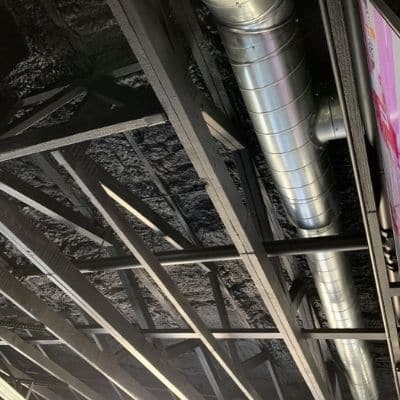
What are the different densities of foam?
Spray foam can generally be purchased in three main density categories. Some of them are referred to with a few different names, so it can get confusing to know which one is the best choice for your project. Foam it Green is available in high density, standard density, and low density options.
Low Density Foam
Low density foam is more commonly referred to as “open cell” foam. The cell structure of open cell foam is such that the cells are less tightly packed and are not all fully closed which makes this density less ideal for applications that encounter moisture. Low density open cell foam is “spongier” than the other foams which makes is a better choice for sound deadening or air stopping between two temperature-controlled areas. Another name you may hear used for open cell foam is “half pound foam” which directly refers to its density. Foam it Green open cell formula is actually 0.75 pounds per cubic foot, making it a bit more dense than true half pound foam and giving it an R value of approx. 4 at a thickness of one inch. In addition, our open cell formula is ASTM E84 Class 1 Fire-retardant insulation.

Standard Density Foam
Standard density foam is referred to as such because it is the most commonly used type of foam amongst the most projects. This is the most often used type of foam because it is “closed cell” which means it will stop air, stop moisture, and deliver a high R value of approx. 7 at a thickness of one inch. The density of closed cell Foam it Green is 1.75 pounds per cubic foot, which is why you may hear it referred to as “2 pound foam”. It’s ideal for a wide range of projects such as walls, floors, attics, metal buildings, rim joists, and more! Foam it Green closed cell formula is also ASTM E84 Class 1 Fire-retardant insulation, ASTM G21 Anti-microbial, and a Class 3 Vapor Retarder at 3”.

High Density Foam
High density foam is usually referred to exactly as “high density” foam. This type is also closed cell, but even more tightly packed so that it can withstand direct contact with water and even foot traffic. Since this is most often applied to surfaces going underground or on the outside of a building, it is not fire retardant insulation, and will also need to be protected by a coating that can keep UV rays from breaking down the foam over time. The bump you get in R value is only about 10% over the standard closed cell foam, at approx. 7.7 per inch. So, since this foam is about 50% more expensive than the standard foam, your return on investment with it in a regular project doesn’t warrant using it other than when it is specifically called for. With an ultimate density of 2.8 pounds per cubic foot, it’s no surprise you may sometimes hear this referred to as “3 pound foam”. It’s important to note that some may refer to all closed cell foam as “high density” foam, so it’s best to be specific and discuss the density directly when planning a project.
When in Doubt Contact Us!
Most projects are best suited to be attacked with closed cell foam. While it is initially more expensive, that increase in density will reward you with more structural stability, a higher R value, and moisture stopping power.
Still have questions about which foam might be best for your project? Just give us a call so we can have a project expert walk you through it – 1-833-FOAM-IT-G
.